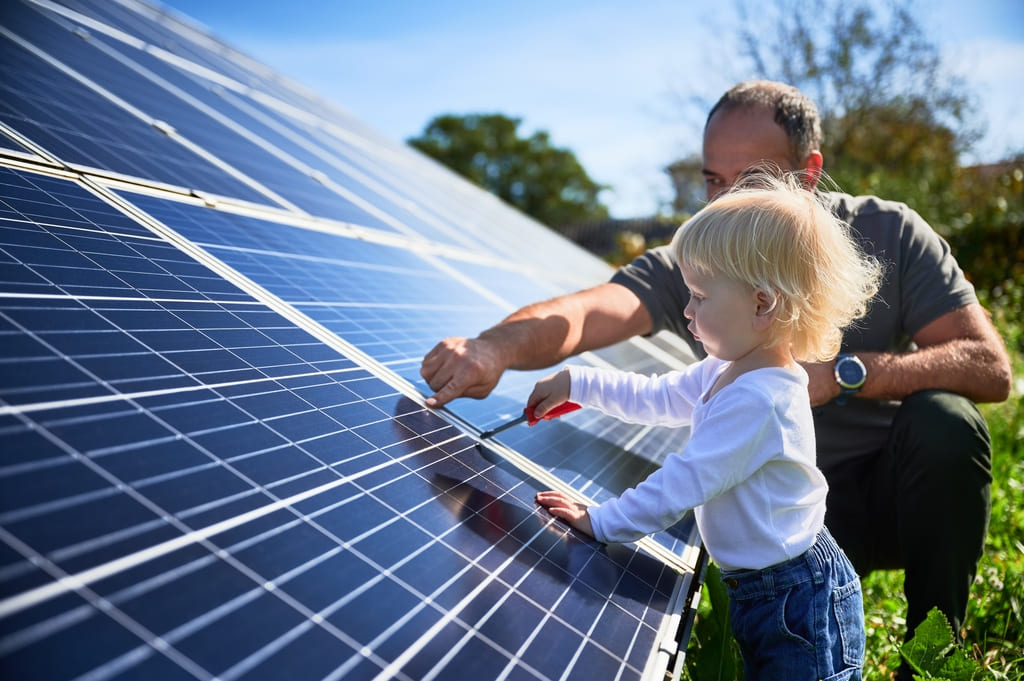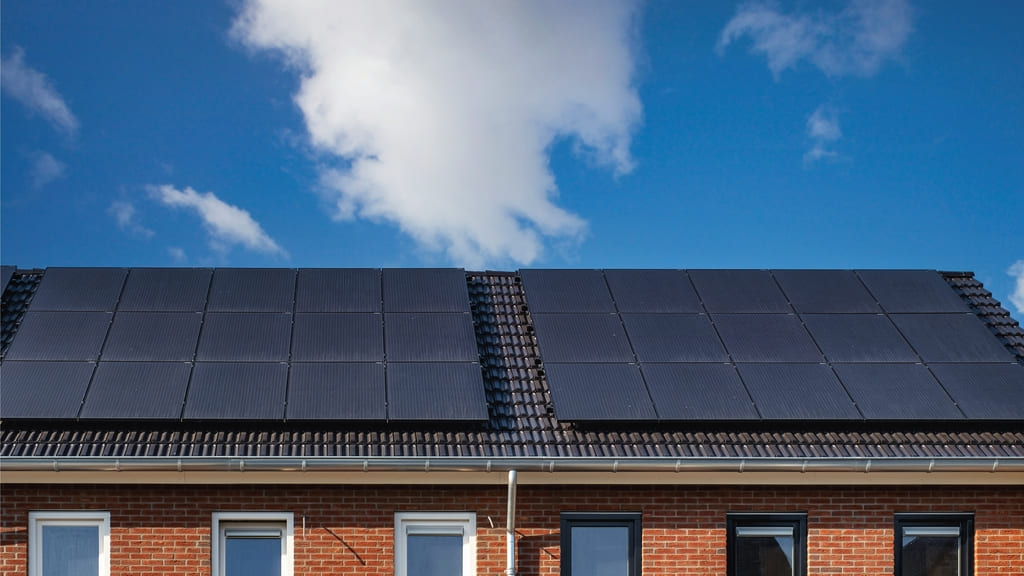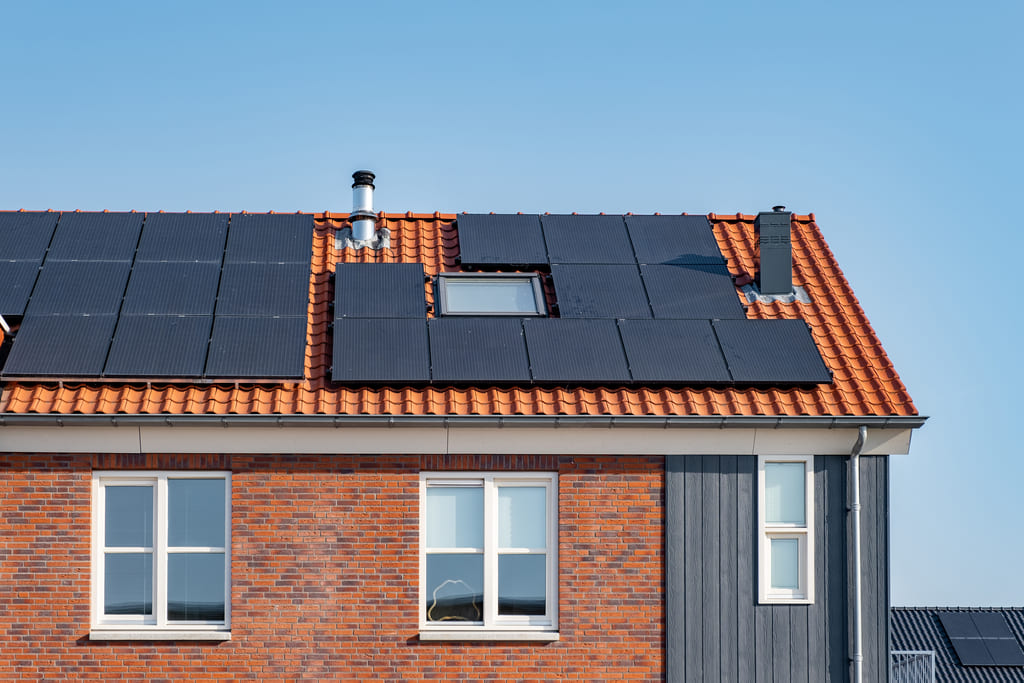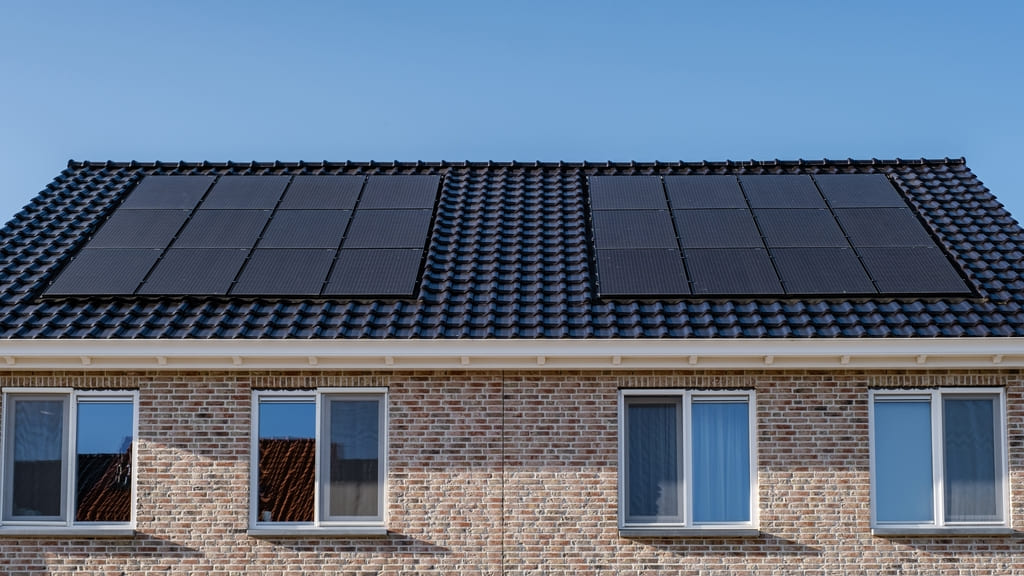In recent years, solar panels have become a hot topic among Americans, with an increasing number of households and businesses opting to harness the power of the sun. But what exactly are solar panels, and how do they work? In this comprehensive guide, we’ll delve into the world of solar energy, exploring the reasons behind the growing trend of solar panel installations in the United States. From the environmental benefits to the financial incentives and the various types of solar panels available, we’ll cover it all. Whether you’re considering making the switch to solar energy or simply curious about this renewable energy source, join us as we shine a light on the ins and outs of solar panels.
What Are Solar Panels?
Solar panels, also known as photovoltaic panels, are devices that convert sunlight into electricity through the photovoltaic effect.
These panels are typically composed of solar cells, which are made from semiconductor materials such as silicon. When sunlight hits the solar cells, the photons are absorbed, causing the release of electrons, which generates an electric current. This renewable energy technology is becoming increasingly popular due to its ability to provide clean and sustainable electricity.
Solar panels are used in a variety of applications, including residential and commercial rooftop installations, as well as large-scale solar farms to harness solar energy for power generation. Their eco-friendly nature aligns with the growing focus on sustainability and reducing carbon emissions.
How Do Solar Panels Work?
Solar panels harness the energy from sunlight and convert it into electrical power using semiconductor materials such as silicon.
This process occurs thanks to the photovoltaic effect, where photons from sunlight strike the solar cells, causing the release of electrons, generating an electric current. Solar cells, typically made of layers of silicon, absorb sunlight, allowing electrons to flow, creating a direct current. The electricity produced is then transformed into usable AC power through an inverter, ready for consumption.
Why Are Americans Installing Solar Panels?
The installation of solar panels by Americans has been driven by a combination of economic advantages, environmental benefits, and the potential for energy independence.
One of the primary drivers behind the increased adoption of solar panels in the United States is the economics of solar energy. With the declining cost of solar technology and the availability of government incentives, such as tax credits and rebates, many homeowners and businesses find it financially appealing to invest in solar power systems. The potential for long-term savings on electricity bills further motivates individuals to embrace solar energy.
Moreover, environmental awareness plays a significant role in the decision to install solar panels. As more people become conscious of their environmental footprint, they seek sustainable and renewable energy sources. Solar power, being a clean and renewable energy option, aligns with these values, making it an attractive choice for those committed to reducing their carbon emissions and mitigating climate change.
The pursuit of sustainable energy solutions drives the adoption of solar panels. As the United States aims to transition to a more sustainable and resilient energy infrastructure, solar power emerges as a vital component of this strategy. The desire to reduce dependence on fossil fuels and promote energy independence motivates both individuals and communities to invest in solar technology, contributing to a more sustainable and secure energy future.
What Are the Benefits of Solar Panels?
The benefits of solar panels extend beyond cost savings to encompass environmental advantages, reduced reliance on traditional energy sources, and a sustainable approach to power generation.
By harnessing solar energy, households and businesses can significantly reduce their electricity bills and even generate excess power, which can be sold back to the grid. This not only translates to substantial cost savings in the long run, but also establishes a form of passive income.
The utilization of solar panels contributes to a notable decline in carbon emissions and air pollution, thus promoting a healthier environment. Embracing solar power also diminishes dependency on finite fossil fuels, promoting a more stable and secure energy future.
Ultimately, the widespread adoption of solar panels signals a decisive shift towards sustainable energy practices and supports the global transition to clean, renewable power sources, aligning with the imperative for environmental conservation and combatting climate change.
How Do Solar Panels Help the Environment?
Solar panels contribute to environmental preservation by harnessing renewable solar energy, reducing carbon emissions, and mitigating the impact of climate change through sustainable power generation.
By capturing sunlight and converting it into electricity, solar panels offer an eco-friendly alternative to traditional energy sources. This results in a significant reduction in greenhouse gas emissions, enabling a cleaner and healthier environment for both current and future generations.
Solar energy promotes renewable energy adoption, diminishing our reliance on finite fossil fuels that contribute to environmental degradation. The installation of solar panels is a tangible step towards a more sustainable future, aligning with global efforts to combat climate change and promote a greener, more sustainable planet.
What Are the Financial Incentives for Installing Solar Panels?
The installation of solar panels offers financial incentives such as tax credits, rebates, and increased property value for homeowners, effectively lowering the overall cost of adopting solar power.
Furthermore, solar panels are an attractive investment due to the various tax incentives available at the federal, state, and local levels. These incentives can significantly offset the initial installation costs and ongoing operational expenses. Rebates from utility companies and government programs further contribute to making solar energy more accessible and affordable for homeowners.
The installation of solar panels can substantially increase the property value of a home. Studies have shown that homes with solar panels tend to sell for a premium and attract more potential buyers, making it a lucrative long-term investment.
What Are the Different Types of Solar Panels?
Different types of solar panels include monocrystalline, polycrystalline, thin-film, building-integrated photovoltaics (BIPV), and concentrated solar panels, each with unique characteristics and applications.
Monocrystalline solar panels are made from single-crystal silicon, offering high efficiency and durability. Polycrystalline panels, composed of multiple silicon crystals, provide a cost-effective option. Thin-film panels, made from various materials like amorphous silicon or cadmium telluride, are flexible and suitable for curved surfaces. BIPV panels seamlessly integrate into building materials, enhancing aesthetics. Concentrated solar panels use lenses to focus sunlight onto a small area, ideal for large-scale power plants.
Monocrystalline Solar Panels
Monocrystalline solar panels are known for their high efficiency and durability, making them a preferred choice for residential and commercial applications.
One of the distinguishing features of monocrystalline solar panels is their unmatched efficiency, providing a higher power output per square foot compared to other types of solar panels. This attribute makes them an ideal option for installations with limited space, maximizing energy production. Their durability ensures a longer lifespan, often exceeding 25 years, and requiring minimal maintenance, which is a significant advantage for both homeowners and businesses seeking reliable and low-maintenance energy solutions.
Polycrystalline Solar Panels
Polycrystalline solar panels offer a cost-effective solution with good aesthetics, making them a popular choice for homeowners and businesses seeking affordable solar energy options.
Due to their manufacturing process, polycrystalline panels are generally less expensive to produce, resulting in lower upfront costs for consumers. When compared to monocrystalline panels, they strike a balance between cost and efficiency, making them an attractive choice for budget-conscious individuals and organizations.
The visual appeal of polycrystalline panels is noteworthy. Their blue-speckled appearance is often perceived as visually appealing and can seamlessly integrate into various architectural styles, adding a touch of modernity to the surroundings.
Thin-Film Solar Panels
Thin-film solar panels are renowned for their flexibility and versatility, allowing for a wide range of applications such as building-integrated solutions and portable power systems.
Their thin and lightweight design makes them ideal for unconventional applications, including curved surfaces and irregularly shaped structures. This adaptability opens up possibilities for solar integration in architecture, automotive, and wearable technology.
The flexibility of thin-film solar panels also enables their use in off-grid locations, providing sustainable energy solutions in remote areas, outdoor events, or emergency relief efforts.
BIPV Solar Panels
Building-integrated photovoltaic (BIPV) solar panels seamlessly integrate into the architecture of buildings, offering both energy generation and aesthetic enhancement.
One of the key benefits of BIPV solar panels is their ability to serve a dual purpose, contributing to the overall sustainability and visual appeal of a structure. The integration of these panels into the building design not only generates clean energy but also enhances the aesthetics of the building, creating a seamless and modern look. The architectural flexibility and versatility of BIPV panels allow for various design options, including facades, roofs, and windows, which can be customized to complement the building’s overall design.
Concentrated Solar Panels
Concentrated solar panels utilize mirrors and lenses to focus sunlight, maximizing efficiency and power generation for large-scale solar energy projects.
This concentrated approach enables the panels to harness solar energy more effectively, as the sunlight is concentrated onto a smaller area, leading to higher temperatures and more efficient power generation. The high efficiency of these systems makes them ideal for utility-scale solar projects, where maximum power output is crucial for meeting the demands of large-scale electricity needs and reducing the overall cost per watt of energy.
What Factors Should Be Considered When Choosing Solar Panels?
Several crucial factors should be considered when selecting solar panels, including efficiency, durability, cost, and aesthetics, to ensure the optimal choice for specific energy needs.
Efficiency is a significant consideration as it directly impacts the amount of electricity generated from the sunlight received. High-efficiency panels can harness more energy from limited space, making them ideal for rooftops or areas with space constraints.
Longevity is another important factor. Investing in durable panels can provide long-term benefits, reducing the frequency of replacements and maintenance costs.
Cost-effectiveness involves assessing the overall lifetime savings from reduced energy bills and potential incentives or rebates.
Aesthetics play a role, especially for residential installations, where the panels blend seamlessly with the architectural design.
Efficiency
Efficiency is a critical parameter in solar panel selection, directly impacting energy output and overall performance in converting sunlight into electricity.
High efficiency solar panels can greatly increase energy yield, enabling more electricity to be generated for the same amount of sunlight. This is particularly important in maximizing the potential of limited roof space or land area for solar installations.
Enhanced efficiency also contributes to the cost-effectiveness of a solar power system, as it can deliver greater electricity production over the lifespan of the panels. Highly efficient panels often have better performance in low-light conditions, making them suitable for a wider range of climates and environments.
Durability
The durability of solar panels is essential for long-term performance, encompassing factors such as longevity, weather resistance, and reliability in various environmental conditions.
Longevity plays a critical role in the sustainability of solar panels, as they are designed to last for decades, providing sustainable energy throughout their lifecycle. The weather resistance of solar panels is crucial for their effectiveness in diverse climates, ensuring that they can withstand harsh conditions such as extreme temperatures, heavy snow, and high winds without compromising their performance.
The reliability of solar panels is imperative for consistent energy generation, making them a dependable source of renewable power. This reliability instills confidence in their long-term effectiveness, offering a sound investment for both residential and commercial applications.
Cost
Cost considerations play a crucial role in solar panel selection, balancing affordability and long-term investment returns to make an informed choice.
When evaluating the financial implications of solar panel cost, it’s essential to focus not only on the upfront expenditure but also on the long-term benefits. The initial investment in solar panels can lead to substantial savings on utility bills over time. This translates into a favorable return on investment (ROI), making the decision financially rewarding. With advancements in technology and increased market competition, the affordability of solar panels has improved, making them a viable option for many households and businesses.
Aesthetics
Aesthetics are an important factor in solar panel selection, influencing the visual appeal and seamless integration of solar installations into architectural designs.
The aesthetics of solar panels play a crucial role in ensuring that they complement the overall architectural harmony of buildings and landscapes. By offering a visually appealing addition, solar systems can enhance the aesthetic value of residential, commercial, and industrial structures.
The integration of solar panels into diverse settings, whether through rooftop installations, building facades, or ground-mounted arrays, requires a thoughtful approach that considers both the aesthetics and functionality of the solar technology. Effective design and placement of solar panels can contribute to creating visually stunning and environmentally conscious architectural arrangements.
How Can Someone Get Started with Installing Solar Panels?
The journey to installing solar panels begins with assessing energy needs, finding a reputable solar panel installer, like Simple Flow, and understanding the available financing options for the installation.
Once a Simple Flow energy advisor has determined your energy requirements, the next step is to research and select a trusted solar panel installer. This involves checking their credentials, experience, and customer reviews to ensure reliability and quality service.
Understanding the various financial options such as solar loans, leasing arrangements, and incentives provided by government programs can help make the installation process more affordable and rewarding. It’s essential to explore these options thoroughly to make informed decisions and maximize the benefits of solar energy.
Assessing Energy Needs
Assessing energy needs involves evaluating current electricity consumption, identifying potential areas for energy savings, and determining the desired level of energy independence through solar power.
To begin, an in-depth analysis of the household or business’ energy usage is essential. This includes examining historical electricity bills, taking into account seasonal variations, and identifying peak consumption periods. Conducting an energy audit can help pinpoint areas where efficiency improvements can be made, such as upgrading to energy-efficient appliances, optimizing lighting systems, and implementing smart energy management solutions. Setting clear goals for energy independence, whether it’s partial or full reliance on solar power, plays a crucial role in the assessment process.
Finding a Reputable Solar Panel Installer
Selecting an experienced and reputable solar panel installer is crucial for ensuring high-quality installation, expert guidance, and long-term performance of the solar energy system.
When choosing a solar panel installer, it’s essential to consider their expertise in the field. Look for installers who have a proven track record of successful installations and possess the necessary industry knowledge. Check their credentials, such as certifications and licenses, to ensure they meet the required standards. The quality of the installation is also paramount. A reliable installer will use high-quality materials and follow best practices to ensure the system’s optimal performance.
Understanding Financing Options
Understanding the available financing options for solar panel installations includes exploring incentives, loans, leasing programs, and other financial avenues to make the installation more accessible and affordable.
With the growing awareness of renewable energy, solar panel installations have gained popularity for their environmental and economic benefits. One of the main financing options is through incentives offered by federal, state, and local governments, which often include tax credits, rebates, and grants to offset the upfront costs. Another avenue is through loans specifically designed for solar projects, offering attractive interest rates and flexible repayment terms. Additionally, leasing programs provide an alternative where homeowners can lease the solar panels and pay a fixed monthly fee. These financing options enable more people to embrace solar energy and contribute to sustainable living.



